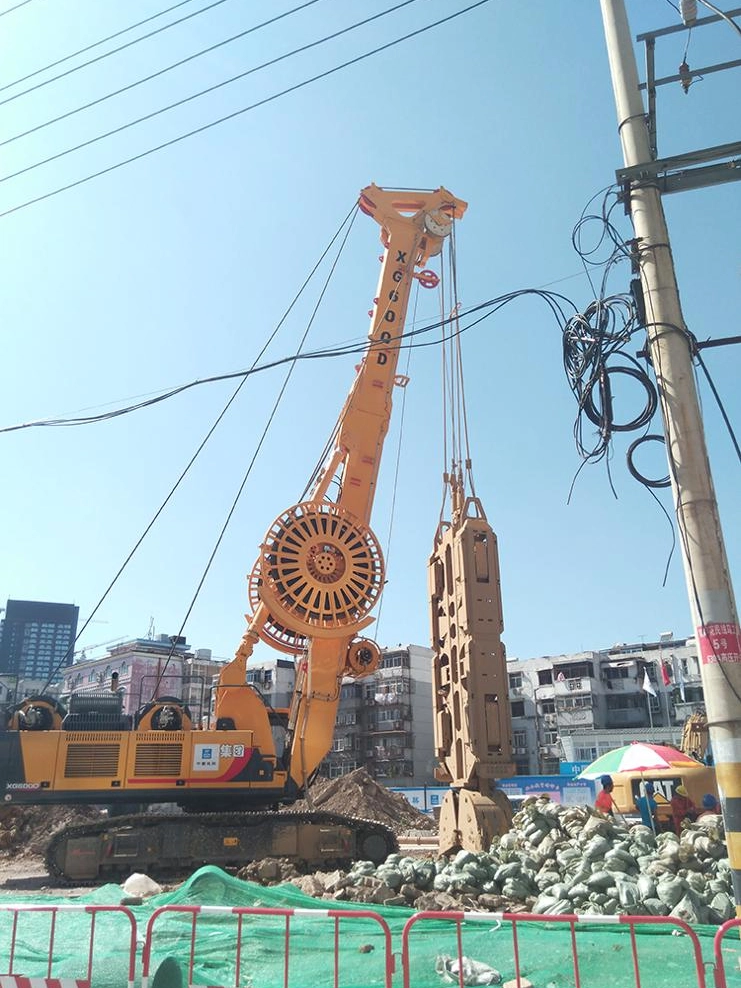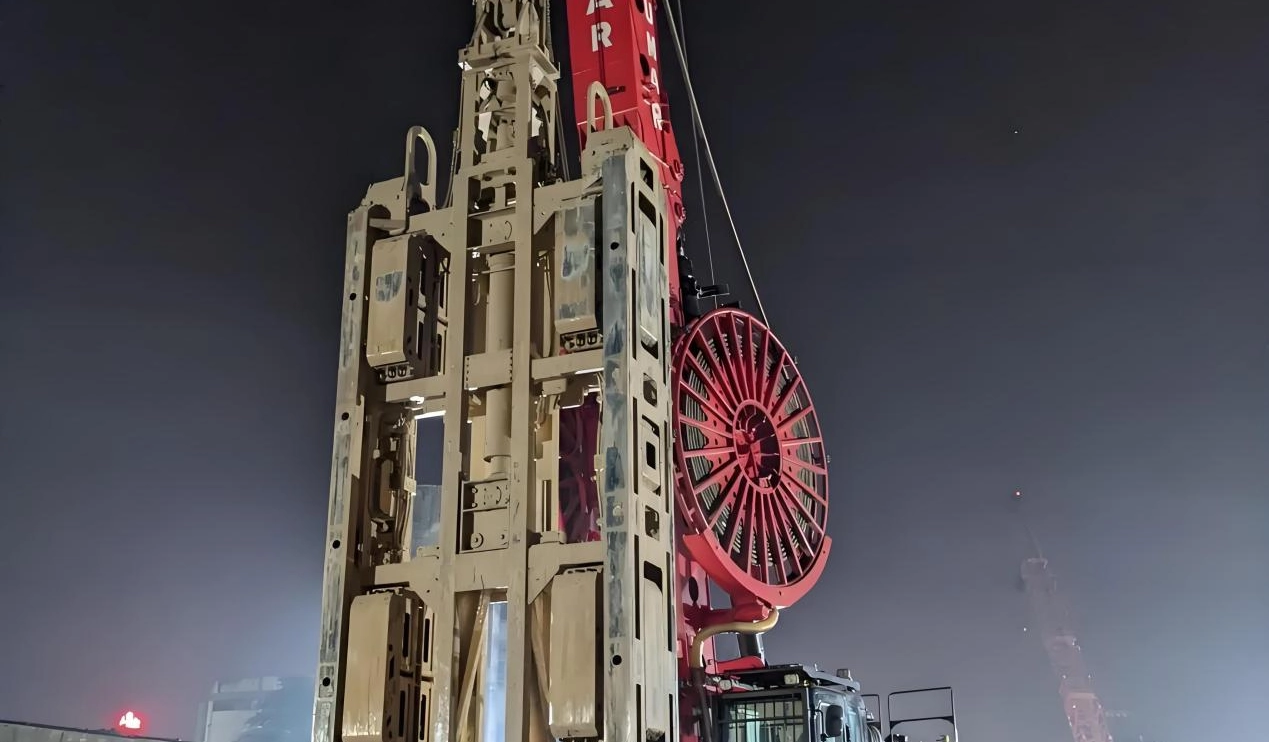Diaphragm Wall Hydraulic Grabs in Mega Dam Construction: BRI’s Latest Engineering Feats
Industry News
2025/04/08
The Belt and Road Initiative (BRI), introduced by China in 2013, has reshaped worldwide infrastructure growth. It links continents through bold endeavors like massive dam building. These enormous projects depend heavily on innovative technology. Among these, diaphragm wall hydraulic grabs stand out prominently. As a vital element of contemporary foundation engineering, these devices guarantee strength and productivity in some of the planet’s toughest settings. In this blog, we’ll investigate how diaphragm wall hydraulic grabs are transforming massive dam construction within the BRI framework. We’ll also examine their technical strengths and their influence on remarkable engineering achievements globally.
What Is the Belt and Road Initiative?
The Belt and Road Initiative is a worldwide development plan focused on boosting trade and linkage across over 150 nations. Frequently called the “New Silk Road,” it includes terrestrial “Belt” pathways and oceanic “Road” routes. It emphasizes efforts like railroads, harbors, and enormous dams. Massive dam building, in particular, emerges as a crucial aspect. It meets energy needs while displaying sophisticated engineering answers.
The Role of Diaphragm Wall Hydraulic Grabs in Mega Dam Construction
Understanding Diaphragm Wall Hydraulic Grabs
Diaphragm wall hydraulic grabs are advanced driiling machines crafted for deep groundwork tasks. Unlike older techniques, these tools harness hydraulic force. They carve out upright sections of earth or stone, forming sturdy concrete barriers. In massive dam building, they construct retaining frameworks, leak-proof shields, and base supports. This ensures the structural soundness of these huge undertakings.
Notable traits of diaphragm wall hydraulic grabs include:
Depth Reach: They dig trenches as deep as 110 meters.
Accuracy: Sophisticated inclinometers maintain upright precision, vital for dam firmness.
Flexibility: They suit varied ground types, from loose clay to solid rock.
Why Mega Dams Need Diaphragm Wall Hydraulic Grabs
Massive dams within the BRI encounter distinct obstacles: shaky soil, elevated water levels, and heavy structural weights. Diaphragm wall hydraulic grabs tackle these effectively. They:
- Block Leakage: Form tight shields to safeguard dam bases.
- Aid Deep Digging: Allow secure building in crowded or profound locations.
- Boost Productivity: Cut down extra construction time with swift lifting speeds.
For example, in efforts like the Lower Sesan 2 Dam in Cambodia—a BRI-supported project—these grabs have been key. They established strong bases despite tricky geological settings.
BRI’s Engineering Feats: Mega Dam Projects Powered by Hydraulic Grabs
Case Study: Lower Sesan 2 Dam, Cambodia
The Lower Sesan 2 Dam, finalized in 2018, reflects the BRI’s vision vividly. This Chinese-backed hydropower effort ranks among Asia’s broadest dams. It depends on diaphragm wall methods to handle its reservoir’s ecological and structural needs. Hydraulic grabs enabled the building of deep retaining barriers. As a result, they reduced leakage dangers in a flood-prone area.
Case Study: Budhigandaki Hydropower Project, Nepal
The Budhigandaki project in Nepal, though slowed by political unrest, showcases the promise of diaphragm wall hydraulic grabs in rugged landscapes. Planned as a 1,200-megawatt structure, it uses these tools to carve steady bases amid tough terrain. This aligns with the BRI’s aim of regional energy growth.
Technical Advantages in BRI Projects
Using diaphragm wall hydraulic grabs in BRI massive dams delivers numerous technical perks:
| Trait | Gain | Sample Use |
| Strong Closing Power | Smooth digging in hard layers | Rough grounds in Nepal |
| Quick Lifting Pace | Shortened building schedules | Lower Sesan 2 Dam |
| Precise Tracking Systems | Exact depth and angle management | City dam locations |
| Quiet Functioning | Less disturbance in busy zones | Southeast Asian efforts |
These strengths position hydraulic grabs as transformative. They ensure BRI dams meet engineering and ecological benchmarks reliably.
How Diaphragm Wall Hydraulic Grabs Enhance Construction Efficiency
Speed and Precision
In massive dam building, time equals cost. Diaphragm wall hydraulic grabs, such as the XCMG XG600D Diaphragm Wall Hydraulic Grabs, offer lifting speeds up to 40 meters per minute. This slashes digging duration significantly. Plus, their built-in inclinometers and digital displays deliver live data. Consequently, trenches match design plans perfectly.
Adaptability to Complex Sites
These grabs adjust effortlessly to varied grounds—soft soils or rocky cliffs. Models like the SANY SH700 boast tough builds and strong jaw power. Hence, they excel in the diverse earth types found in BRI projects across Asia and Africa.
Cost-Effectiveness
The upfront cost of hydraulic grabs might be steep. However, their longevity and minimal upkeep expenses yield lasting savings. They reduce the need for broad soil reinforcement or fixes. Thus, they optimize funds—a key factor in BRI’s multi-billion-dollar plans.
MachPlaza: Your Partner in Construction Machinery Excellence
Before addressing frequent queries about this technology, let’s highlight MachPlaza. As a top supplier of construction tools, MachPlaza excels in providing premium gear to worldwide markets. We prioritize creativity and dependability. Our offerings include diaphragm wall hydraulic grabs—like the XCMG XG600D and SANY SH700—customized for massive dam needs. With our dedication to quality, MachPlaza equips builders globally to conquer the hardest tasks confidently.
FAQs About Diaphragm Wall Hydraulic Grabs and Mega Dam Construction
Q1. What Are Diaphragm Wall Hydraulic Grabs Used For in Mega Dam Construction?
A1. Diaphragm wall hydraulic grabs dig deep channels to craft reinforced concrete barriers. These serve as retaining setups, leak-proof guards, and base supports in massive dams. Their accuracy and strength ensure steadiness in tough scenarios.
Q2. How Does the Belt and Road Initiative Benefit from These Machines?
A2. The BRI taps diaphragm wall hydraulic grabs to speed up massive dam building. They provide solid bases that endure environmental strains. This bolsters the initiative’s aims of energy creation and regional linkage.
Q3. What Makes Hydraulic Grabs Different from Mechanical Grabs?
A3. Hydraulic grabs employ hydraulic cylinders for greater closing strength and quieter performance. In contrast, mechanical grabs rely on cables. This makes hydraulic versions more effective and fitting for urban or delicate dam sites.
Q4. Can Diaphragm Wall Hydraulic Grabs Handle Rocky Terrain?
A4. Yes, modern designs include potent jaws and optional chisels. These break through stone easily. Thus, they’re adaptable for the mixed grounds in massive dam efforts.
Take Your Mega Dam Projects to the Next Level
The Belt and Road Initiative keeps reshaping global development. Diaphragm wall hydraulic grabs lie at the core of its massive dam triumphs. Their precision, flexibility, and effectiveness make them vital for engineers facing these grand challenges. Are you set to advance your building skills? Check out our array of top-tier grabs at MachPlaza. Join the vanguard of BRI innovation. Reach out today to find the ideal tool for your next massive dam venture—let’s shape tomorrow together!



